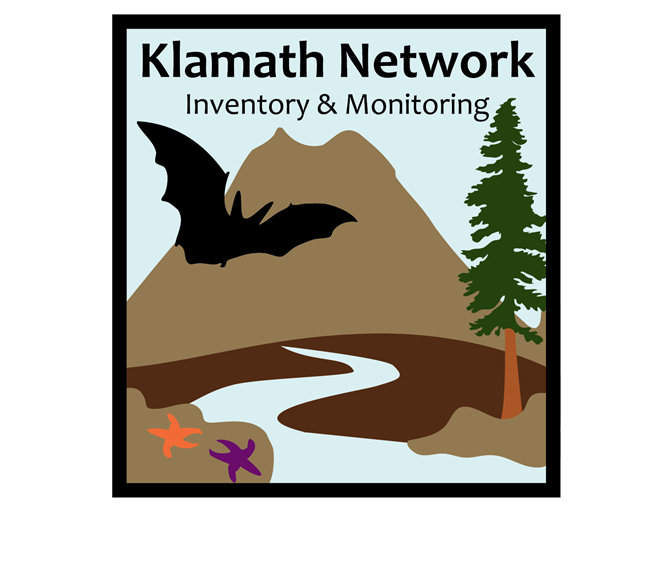Last updated: April 18, 2022
Article
Cascades Frog

©Gary Nafis (CC BY-NC-ND3.0)
General Description
Splash! What’s that? You look but only see water rings. Upon closer inspection there’s a cluster of black and white eggs at the shallow edge of a pond. You hear five faint chucking sounds and a low pitched grating noise. There it is! It’s a frog sitting on a partially submerged rock. The frog’s golden eyes shine against a dark “mask” and it has white markings distinctively lining its lips. The body is brownish-green with inky black spots and small bumps on its back and sides. Then you notice a flash of cream-yellow, the pale color of honey, on its long, stretched-out hind legs as it hops away. You’ve just spotted a Cascades frog.
The Cascades frog (Rana cascadae) is named for its home region. Rana is Latin for frog and cascadae refers to the Cascade Mountains. However, this species also occurs in the Olympic Mountains of northwest Washington and Trinity Mountains of northern California.
About the size of a small child’s hand (4–7.6 cm long), these montane (mountain dwelling) amphibians are usually found above 730 m (2,400 ft) elevation in wet meadows, damp forest bogs, lakes, ponds, and small streams. They rely on clean and permanent water sources for survival.
Behavior and Feeding
Cascades frogs are most active from May to October. In winter, they burrow into muddy bottoms of lakes or ponds to hibernate. Once the snow melts, males begin calling during the day, but mostly at night. They call both above and below the water surface to find mates and announce their territory to other males.
Adult frogs are generalist predators that eat a variety of invertebrates such as water striders, caddisflies, mayflies, crane flies, ants, grasshoppers, and spiders. They hunt and forage at the water surface, in wet meadows, and other aquatic habitats. Tadpoles feed at the bottom of waterbodies on detritus and microorganisms such as algae and fungi.
Like other frogs (and amphibians) they are poikilothermic ectotherms meaning their body temperature fluctuates with and is the same as the environmental temperature. They move around among habitats to optimize their body temperature.

©Gary Nafis (CC BY-NC-ND3.0)
Life History
Cascades frogs breed from March to August in still or slow-moving water. The bicolored (black on top and white on bottom) eggs are laid in shallow areas near shorelines of shallow ponds, lakes, and slow-moving streams. The softball-sized mass of 300–500 eggs can be free floating, but is often attached to vegetation.
Frogs undergo complete metamorphosis (transformation). Tadpoles emerge from the eggs and are entirely aquatic—they have gills, a tail fin, and no legs. Rana cascadae tadpoles are dark brown with copper speckling. They grow up to 5 cm long. They transform into adults by August or September, growing legs, reabsorbing their tail, and developing lungs. Frogs become sexually mature and start breeding 2–3 years after metamorphosis. Their typical lifespan is 5–7 years.
Conservation
Populations have declined in areas where they were once abundant. At the southern extent of their range, near Lassen Volcanic National Park, only a few known populations remain. Sadly, they appear to be extirpated in Lassen Volcanic National Park.
Factors contributing to population decline are the introduction of nonnative trout for recreational fishing, habitat alteration or loss, fire suppression, pesticides, climate change, and drought and diseases. The spread of chytrid disease caused by the fungus, Batrachochytrium dendrobatidis, has led to large scale loss in amphibian populations.
Rana cascadae is one of 53 candidate species currently under review for listing under the federal Endangered Species Act and it is recognized as a species of concern in California, Oregon, and Washington. Conservation and habitat restoration efforts include protecting breeding and over-wintering sites, deepening and expanding breeding pools, and preventing the spread of chytrid disease and other pathogens.
Where to See
Within the Klamath Network, Cascades frogs are only found at Crater Lake National Park.
Learn More
http://www.californiaherps.com/frogs/pages/r.cascadae.html
https://www.oregonconservationstrategy.org/strategy-species/cascades-frog/
https://www.fs.fed.us/psw/publications/documents/psw_gtr244/psw_gtr244.pdf
Listen to the Cascades frog: http://www.californiaherps.com/frogs/pages/r.cascadae.sounds.html

Download a pdf of this article.
Prepared by Jennifer Chenoweth
NPS Klamath Inventory & Monitoring Network
Southern Oregon University
1250 Siskiyou Blvd
Ashland, OR 97520
Featured Creature Edition: April 2022
